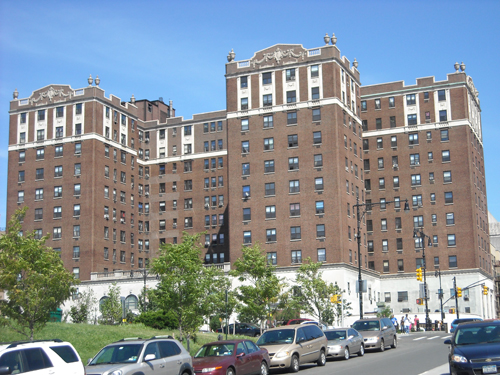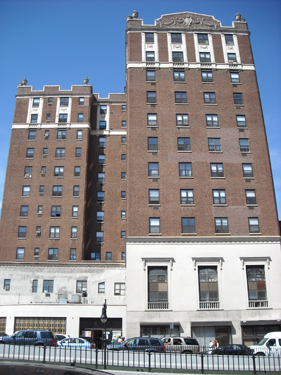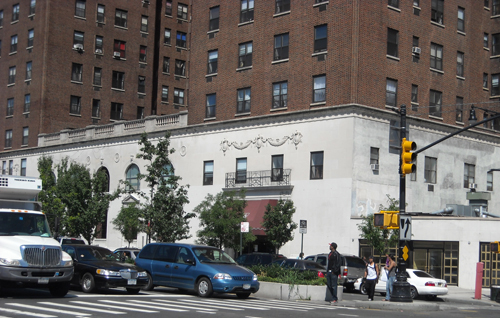Concourse Plaza Hotel

900 Grand Concourse (east side from 161st to 162nd Streets)
Maynicke & Franke, and Paul Revere Henkel
builders: Niewenhous Co., Inc.
1923
The Concourse Plaza Hotel is known to all long time Bronx residents. Many fondly remember it for lavish bar mitzvahs and weddings. The unforgettable Aggie Hurley played by actress Betty Davis in the movie The Catered Affair (1956) yearned for a Concourse Plaza wedding reception for her daughter. For others, the elegant Concourse Plaza meant donning their finest attire to attend splendid social or fraternal banquets, dances, and business luncheons. The hotel was also a favorite for political rallies and even for presidential campaign stops by Franklin Roosevelt, Harry Truman, and John F. Kennedy.
The need for a modern hotel was most apparent in the early 1920s when the Bronx’s population exceeded 800,000. With its rapidly swelling numbers, the Bronx was the equivalent of the sixth largest city in the United States. The Bronx Board of Trade endorsed the creation of Bronx Boosters, a company that quickly sold 10,000 shares of common stock to local businessmen and civic minded citizens eager to see the hotel built. With funding in hand, a convenient location was found to construct their dream hotel. The Concourse Plaza was a success from its outset. It was located on the Grand Concourse—the most prominent Bronx street, and had ready access to all local transportation. From its opening in October, 1923, the hotel and its neighbor Yankee Stadium were always closely intertwined. The Concourse Plaza was even dubbed the “Home of the Yankees.”
In the Concourse Plaza, architects Maynicke & Franke constructed the Bronx’s first apartment hotel of ten stories in Neo-Georgian style. Its apartments were either furnished or unfurnished, ranging from two to six rooms with full kitchens, cedar lined closets, a roof garden, and an open air playground for children supervised by an attendant. It had all the amenities of the best hotels--laundry, restaurant, barber, valet and hairdresser services. Permanent residents included judges, county officials, business men, and athletes who played at the nearby Yankee Stadium and Polo Grounds. Out of town visitors could rent rooms and the hotel had well appointed ball rooms and other facilities for large and small group meetings.
The hotel’s fortunes declined in the late 1960s. Crime was up, real estate values were down and welfare families displaced long time residents. The hotel’s catering business declined as groups sought newer venues for their meetings. The hotel was vital to neighborhood stability and in 1974 the City of New York acquired title to the property. The intent was to convert the building for critically needed senior citizen housing. The City’s fiscal crisis delayed these plans but with the help of the federal government, the plan was finally realized in 1982. The Mid-Bronx Senior Citizens Council today operates the building and is part owner of the site. While not a designated city landmark, the Concourse Plaza enjoys the distinction of being on the Municipal Art Society’s Census of Places that Matter. This recognizes the vital role that it plays in memory and in telling the story of the city.
Janet Butler Munch
Photographs:
Lehman College Art Gallery


